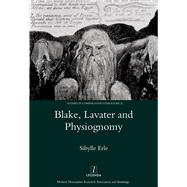
Note: Supplemental materials are not guaranteed with Rental or Used book purchases.
Purchase Benefits
What is included with this book?
| Preface | p. ix |
| Abbreviations | p. xi |
| List of Illustrations | p. xii |
| Introduction | p. 1 |
| From Idea to Parameter: Good Copies | p. 12 |
| From Face to Vision: Good Likeness | p. 35 |
| From Face to Vision: Measuring the Soul | p. 54 |
| Interlude - Urizen I: Silhouette Bodies | p. 77 |
| From Text to Image: Friendship and Memory in Aphorisms on Man | p. 95 |
| From Text to Image: Physiognomy and Embodiment in Aphorisms on Man | p. 115 |
| From Physiognomische Fragmente to Essays on Physiognomy: Editing | p. 134 |
| From Genesis to Blake's Creation Myth: Editing | p. 164 |
| Interlude - Urizen II: Flesh and Blood Bodies | p. 187 |
| Conclusion | p. 203 |
| Bibliography | p. 207 |
| Index | p. 229 |
| Table of Contents provided by Ingram. All Rights Reserved. |
The New copy of this book will include any supplemental materials advertised. Please check the title of the book to determine if it should include any access cards, study guides, lab manuals, CDs, etc.
The Used, Rental and eBook copies of this book are not guaranteed to include any supplemental materials. Typically, only the book itself is included. This is true even if the title states it includes any access cards, study guides, lab manuals, CDs, etc.